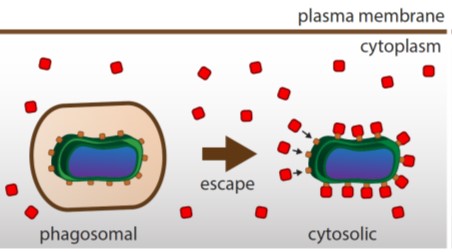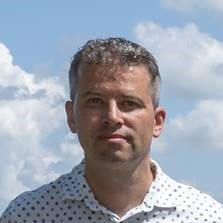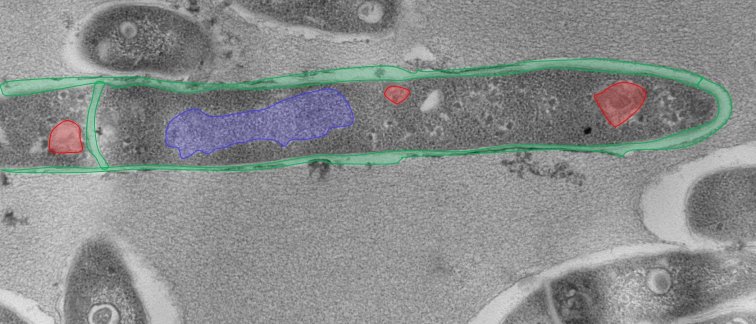Seize the opportunity: until Oct. 24, researchers from Amsterdam Institute of Infection and Immunity (AII) can submit their research proposals for a chance to receive the AII collaboration grant. In 2020, AII awarded one of these collaboration grants to the research project of Dr. Coen Kuijl and Dr. Nicole van der Wel. This grant has opened many doors for them.
It is the year 2007 when Dr. Nicole van der Wel sits behind her electron microscope and makes a groundbreaking discovery: Mycobacterium tuberculosis can escape from the membrane compartment. In the following years it is discovered that proteins secreted through the cell wall contribute to this so called phagosomal escape. However, the exact proteins required for this process are still unknown today. This discovery has stayed with Nicole ever since; she wants to know exactly how the process works and how she can apply this knowledge to develop optimized vaccines.

Mycobacterium tuberculosis
Mycobacterium is a genus of bacteria known primarily as the cause of diseases like tuberculosis and leprosy. Mycobacterium tuberculosis (Mtb) is the bacterium involved in the disease tuberculosis. Tuberculosis is the world's most deadly bacterial infectious disease and primarily affects the lungs. Mycobacteria divide very slowly and tuberculosis treatment takes a long time. The treatment consists of an intensive course of antibiotics for 6 to 24 months. Mtb is an interesting pathogen because its special cell wall protects it from antibiotics. Moreover, the cell wall helps the bacteria survive the degradation mechanisms of the human body by escaping the membrane compartment. Thus, Mtb can survive for years in the human body's immune cells.
It's true on paper, what about in practice?
The question surrounding the phagosomal escape of Mycobacterium is still present in Nicole's mind when she is head of the Electron Microscopy Center Amsterdam (EMCA/ AMC) and meets some like-minded researchers in 2020: Dr. Jeffrey Buter (Stratingh Institute for Chemistry/ UG), Dr. Coen Kuijl (MMI/ Vumc) and Dr. Louis Ates (EXIM/AMC). The four of them get together, have marvelous discussions and decide they are a great team to investigate how the Mycobacterium escape process works. Together they write a research proposal for the AII Collaboration Grant. The AII Collaboration Grant aims to stimulate new collaborations between AII researchers, with at least one research group outside of the applicant's own department. With this grant, AII wants to contribute to possible new collaborative networks, collaborative research lines or help research groups with external grant proposals.
The latter is the plan of Coen and Nicole: being awarded the Collaboration Grant of AII so that they have enough money to purchase chemicals to conduct the first round of research, also known as the proof of concept. If the results show what the foursome expect, they want to submit the preliminary results along with their research proposal for the ENW-M NWO external grant. Nicole shares: "On paper it all seemed to work, but we needed money to prove that our theory actually works in practice. The AII collaboration grant was a blessing in this regard."
In the research proposal, Nicole, Coen and colleagues describe that they want to investigate which proteins are involved in the escape process of Mycobacterium. This will help them in two fronts: (1) Understanding the survival mechanisms of Mycobacterium, (2) Discovering new targets for vaccines. To this end, they have developed their own method called Mycobacterial Coating with Trehalose-Associated Proteins (MyCo-TrAP). With this method the group can study different populations of bacteria: those inside or outside the membrane compartment, to understand them in a better way, pinpoint the proteins required for the phagosomal escape and as a last step make it possible to "stick" things to the bacteria, for example, proteins to improve the vaccine against tuberculosis.

From AII collaboration grant to ENW-M NWO grant
And as it turns out, the proof of concept study, co-sponsored by the AII collaboration grant, does indeed show that what the group expected theoretically, is true in practice.
Coen explains: "Through our preliminary results, we were able to demonstrate that our expectations were correct. We added this data to our research proposal and submitted it to the NWO. And we were awarded the grant! Without the collaboration grant, we would never have been able to demonstrate this and I estimate that there is a small chance that we would have received the ENW-M NWO grant."
The NWO grant allows Coen and Nicole to hire two new employees. Soon a PhD student will start working with Coen and in addition a postdoc will start working with Nicole. In the coming time they will first focus on the recruitment process and then continue with the research project. Further in the near future, they want to solve the long-standing question of which protein is responsible for the escape of Mycobacterium and possibly apply MyCo-TrAP in vaccine development.
Amsterdam Institute for Infection and Immunity (AII) congratulates Dr. Nicole van der Wel and Dr. Coen Kuijl on receiving the well-deserved collaboration grant and ENW-M NWO grant. We wish the research team all the best in the future and are looking forward to reading the research outcomes.
For more information contact Dr. Nicole van der Wel or Dr. Coen Kuijl or view the research poster.
Text: Esmée Vesseur

